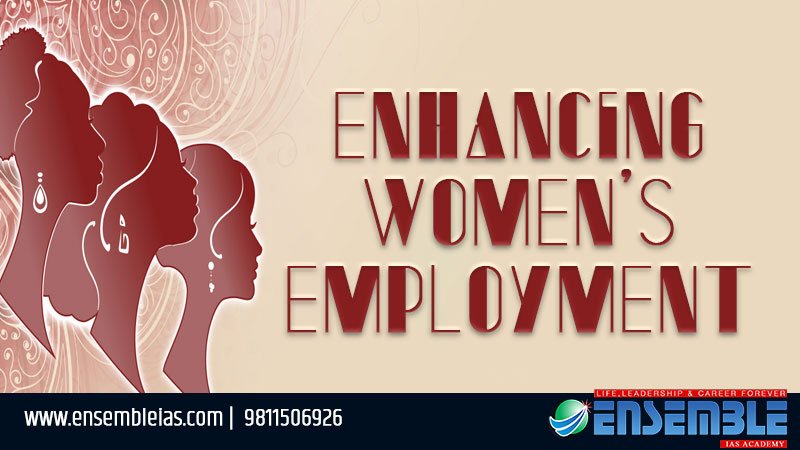Enhancing women’s: Recovery efforts cannot be gender-blind, because, as the saying goes, “gender-blind is not gender-neutral.” There are four areas where government policy can help ameliorate long-standing issues.
Owing to Covid-19, global female employment is 19% more at risk than male employment (ILO estimates). For India, economist Ashwini Deshpande estimates that compared to men, women were 9.5% less likely to be employed in August 2020 compared to August 2019. Ominously, girls are at greater risk of losing their human capital — in India, there is a 30% increase in new registrations on matrimonial websites, and, in South Asia, an additional 200,000 girls are expected to be forced into child marriages this year (Lancet).
To buy our online courses Click Here
First, address child care-related issues, a critical barrier to women’s labour force participation. The biggest dividends will come from focusing on women in the informal sector. In India, Nepal, Bangladesh and Pakistan, 76, 89, 71 and 66% of working women, respectively, are employed on own account or as family workers (ILO). The Integrated Child Development Scheme provides some support, but it is not a full-time child care solution.
The “Sangini Centres” of Self Employed Women’s Association (SEWA) provide full-day child care for 0-5 year olds, including nutrition, health and child care. Women using these centres report a monthly income increase of between ₹500-1,000. Similar centres will have to be significantly expanded. As for the formal sector, governments can mandate paternity leave on a use-it-or-lose-it basis, as one way to get men to share in infant care duties.
Third, in the formal sector, use the income tax system to push female labour force participation. Women have a higher elasticity of labour supply than men (their labour supply is more responsive to their take-home wages) — lower income taxes for women can incentivize their participation. In India, given the abysmally low rate of female participation, such a move will not have a significant impact on public finances. This can be compensated with a much smaller tax increase on male employees, if needed. This could help create incentives for female employment within households.
The best way to “not waste the crisis” is to ensure that women come back stronger. Women in India and other parts of South Asia can become a critical part of the recovery.




